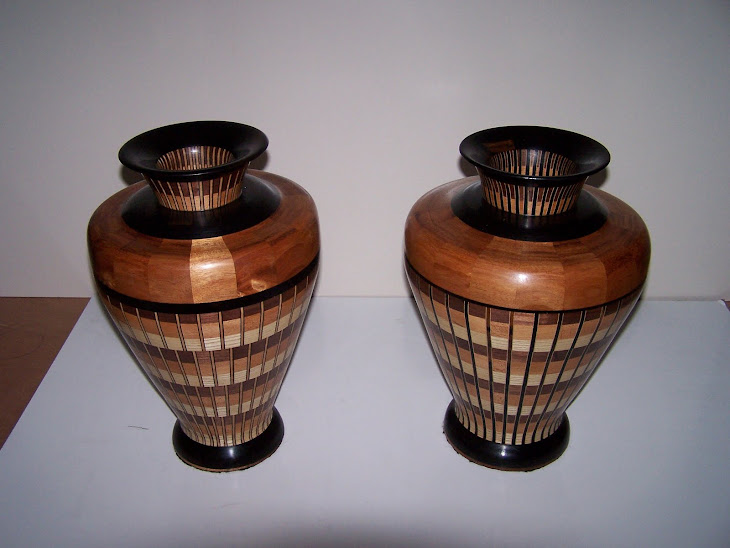I love it when folks write in with questions.
Paul from NH writes:
Hi Steve: I attended one of your presentations at the Stratham Library last fall. I couldn't believe the beautiful work you do. I had just inherited my father's lathe. I have subsequently taken some lessons in how to turn bowls and am enjoying that a lot. I remember one thing that impressed me was the finish you had on your wood. Someone asked you about that and you said that you put sanding sealer on and then sandpaper it off and that you do that five times. And then you use bees wax. My question is, am I remembering that correctly, and if so, how do you apply the bees wax? Do you mix it with some kind of oil? And what do you use to apply it? Do you polish the work after applying the bees wax? And do you use fancy polishing systems like the Beall buffing system, or something more simple? And during the five times that you sand, do you start with say 80 each time, or do you start with a higher grade each time, like 220, 320 etc?
I guess what I am asking for is a lot more detail about how you finish your work. Eventually my goal is to gain the skill to produce segmented pieces similar to what you do and multi generational laminated work as well.
I just joined your blog using Yahoo because I had an account set up with them. But I use Comcast.net for my e-mail. Thanks in advance for any help you can give me. And if you ever decide to give lessons in how to do what you do, count me in!
Yours, Paul
Dear Paul:
Thanks for the great questions.
Although I feel my expertise is not finishes I am glad to pass along what I use an what I have learned.
First my method for finishing continues to evolve and is very different than the one I used a year ago, and I trust next year it will be changing also. Your method of finish work is a journey in which you are always looking for new ways to get the best look and adapting to apply those new techniques.
One book well worth getting that helped me is 'Wood Finishing 101' by Bob Flexner.
My fall back tried and true is 3 or more coats of sanding sealer fallowed by 2 coats of a wipe on poly.
Finish is as much about feel as it is about look. Sanding sealer fills in and gives it that smooth feel. Sand between each coat starting with 120 up to 320 or a fine steel wool.
On the lathe I will use a friction polish for smaller vessels. The friction polish 'cooks' into the wood giving you a wonderful long lasting finish. I will apply bee's wax to a spinning piece on the lathe for the final finish. the speed of the lathe melts the wax as you touch the wax to the lathe. Fallow with a clean rag and get it as hot from friction as your fingers can take. The larger vessels I use the 'tried and true' method of sanding sealer.
I like the polyurethane's also. I would never use it right out of the can but thin it with paint thinner. I have mason jars labeled 50/50 and so forth.
Recently I have discovered OJ Shine juice.
http://www.youtube.com/watch?v=taJbBmcaAZQ.
This is a wonderful easy to use and make finish.
Regarding lessons, I have been thinking of starting a 'open shop time'. Say a Saturday in which I will be in the shop and it is open to anyone to come by and talk about wood and ask questions. If enough folks are interested that sounds like it may be fun.
I will be lecturing in Epsom on Tuesday March 2 and would love to see you there.
Thanks for your support
Always yours in wet glue
Steve
Wednesday, February 20, 2013
Subscribe to:
Post Comments (Atom)






No comments:
Post a Comment